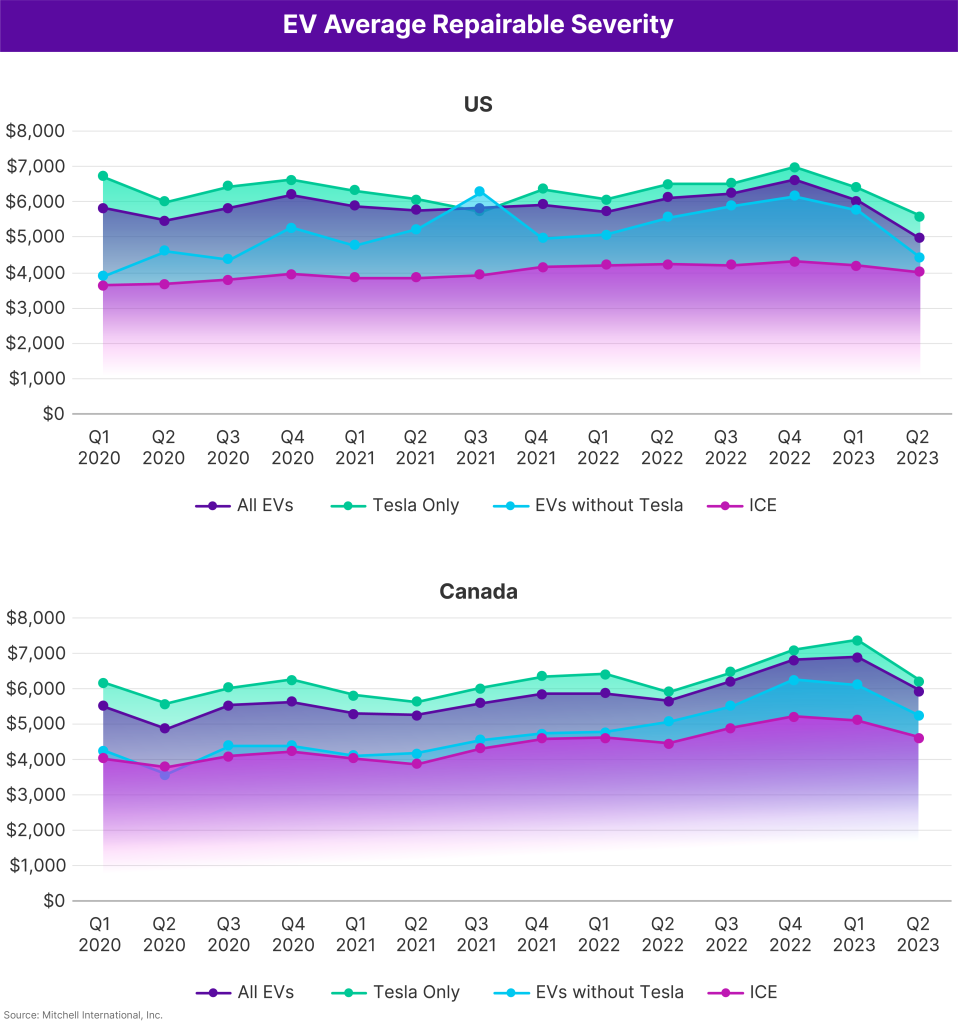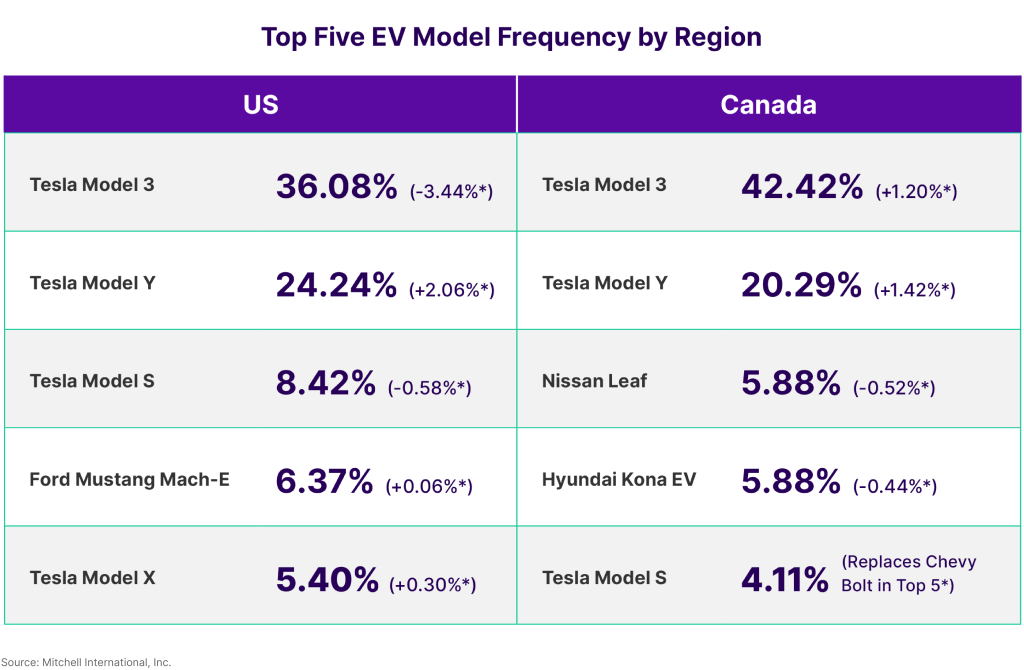Toronto, Ontario — The frequency of electric vehicle collision repair claims grew to 2.64 percent in Canada last quarter, Mitchell stated in its latest Plugged In: EV Collision Insights report.
One of the first notes in the report makes the claim that EVs tend to be designated non-drivable at a lower frequency than ICE counterparts, contrary to popular belief and erroneous news reports that circulated last spring.
“The relative lack of moving parts means that an EV’s critical powertrain is less likely to be compromised during an accident. While certain ADAS components may be disrupted due to an advanced level of interconnectivity, the vehicle still has a higher likelihood of remaining drivable.
“EVs are, however, more apt to be considered non-drivable after a rear-end impact (10.87 percent) than ICE automobiles (9.72 percent). This is primarily due to the presence of powertrain components in the rear of the vehicle—such as an electric motor—that are lacking in ICE automobile design,” wrote Mitchell.
EVs may be written off at a lower frequency than ICE vehicles, but Mitchell’s data says claims severity is often greater with electric vehicles.
“Not surprisingly, claims severity for repairable EVs is outpacing that of ICE alternatives,”
— Ryan Mandell, director of claims performance, Mitchell

The average claim for all EVs was $1,328 higher in Canada, when compared to ICE vehicles. When looking at Tesla models only, that cost differential rises to $1,600.
Labour paint hours for refinishing an electric vehicle can account for 40 percent of the total labour time on an average repair order, making them a key driver of collision claim expenses, reported Mitchell. Refinish hours for EVs averaged 8.51 hours compared to 8.02 for ICE vehicles.
Most EV parts are provided directly from the manufacturer, reported Mitchell, with 90.75 percent of repairable EVs using OEM parts, as compared to 66.5 percent for ICE automobiles. That marks a difference of 24.25 percent.
Additionally, EV repairs include a lower percentage of parts repaired versus replaced: 13.49 pecent versus 19.20 percent for ICE-powered options.
Labour paint hours for refinishing an EV can account for 40 percent of the total labour time on an average repair order, reported Mitchell.
Mitchell also noted the dramatic increase in U.S. consumers that are considering purchasing EVs as their next vehicle—48 percent, nearly half, said they would consider an EV as their next car, up from just 29 percent in Q2 2022.
The company also noted that Tesla and Rivian each marked record-number deliveries during Q2 2023, and that Tesla now claims three of the spots in the EV model frequency ranking in Canada, knocking the Chevy Bolt out of the top five.

To download the latest Plugged-In: EV Collision Insights report, visit the Mitchell website. You can also subscribe to future issues or access previous reports online at www.mitchell.com/plugged-in.









































